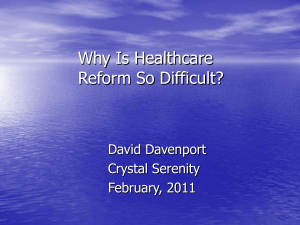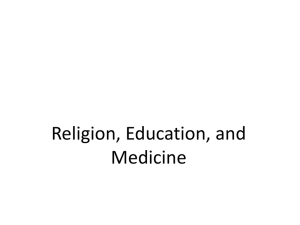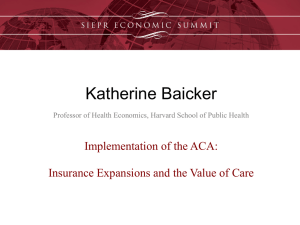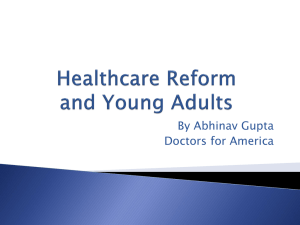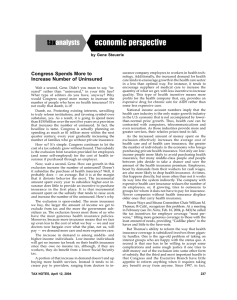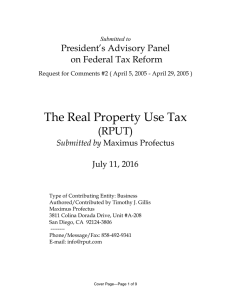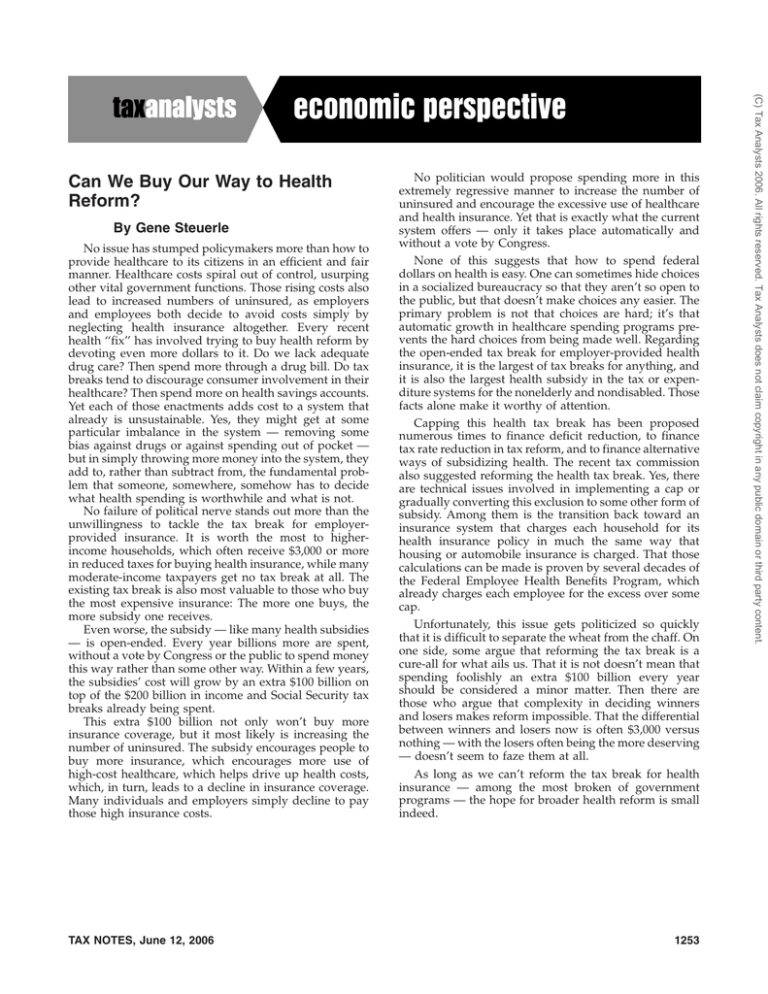
By Gene Steuerle
No issue has stumped policymakers more than how to
provide healthcare to its citizens in an efficient and fair
manner. Healthcare costs spiral out of control, usurping
other vital government functions. Those rising costs also
lead to increased numbers of uninsured, as employers
and employees both decide to avoid costs simply by
neglecting health insurance altogether. Every recent
health ‘‘fix’’ has involved trying to buy health reform by
devoting even more dollars to it. Do we lack adequate
drug care? Then spend more through a drug bill. Do tax
breaks tend to discourage consumer involvement in their
healthcare? Then spend more on health savings accounts.
Yet each of those enactments adds cost to a system that
already is unsustainable. Yes, they might get at some
particular imbalance in the system — removing some
bias against drugs or against spending out of pocket —
but in simply throwing more money into the system, they
add to, rather than subtract from, the fundamental problem that someone, somewhere, somehow has to decide
what health spending is worthwhile and what is not.
No failure of political nerve stands out more than the
unwillingness to tackle the tax break for employerprovided insurance. It is worth the most to higherincome households, which often receive $3,000 or more
in reduced taxes for buying health insurance, while many
moderate-income taxpayers get no tax break at all. The
existing tax break is also most valuable to those who buy
the most expensive insurance: The more one buys, the
more subsidy one receives.
Even worse, the subsidy — like many health subsidies
— is open-ended. Every year billions more are spent,
without a vote by Congress or the public to spend money
this way rather than some other way. Within a few years,
the subsidies’ cost will grow by an extra $100 billion on
top of the $200 billion in income and Social Security tax
breaks already being spent.
This extra $100 billion not only won’t buy more
insurance coverage, but it most likely is increasing the
number of uninsured. The subsidy encourages people to
buy more insurance, which encourages more use of
high-cost healthcare, which helps drive up health costs,
which, in turn, leads to a decline in insurance coverage.
Many individuals and employers simply decline to pay
those high insurance costs.
TAX NOTES, June 12, 2006
No politician would propose spending more in this
extremely regressive manner to increase the number of
uninsured and encourage the excessive use of healthcare
and health insurance. Yet that is exactly what the current
system offers — only it takes place automatically and
without a vote by Congress.
None of this suggests that how to spend federal
dollars on health is easy. One can sometimes hide choices
in a socialized bureaucracy so that they aren’t so open to
the public, but that doesn’t make choices any easier. The
primary problem is not that choices are hard; it’s that
automatic growth in healthcare spending programs prevents the hard choices from being made well. Regarding
the open-ended tax break for employer-provided health
insurance, it is the largest of tax breaks for anything, and
it is also the largest health subsidy in the tax or expenditure systems for the nonelderly and nondisabled. Those
facts alone make it worthy of attention.
Capping this health tax break has been proposed
numerous times to finance deficit reduction, to finance
tax rate reduction in tax reform, and to finance alternative
ways of subsidizing health. The recent tax commission
also suggested reforming the health tax break. Yes, there
are technical issues involved in implementing a cap or
gradually converting this exclusion to some other form of
subsidy. Among them is the transition back toward an
insurance system that charges each household for its
health insurance policy in much the same way that
housing or automobile insurance is charged. That those
calculations can be made is proven by several decades of
the Federal Employee Health Benefits Program, which
already charges each employee for the excess over some
cap.
Unfortunately, this issue gets politicized so quickly
that it is difficult to separate the wheat from the chaff. On
one side, some argue that reforming the tax break is a
cure-all for what ails us. That it is not doesn’t mean that
spending foolishly an extra $100 billion every year
should be considered a minor matter. Then there are
those who argue that complexity in deciding winners
and losers makes reform impossible. That the differential
between winners and losers now is often $3,000 versus
nothing — with the losers often being the more deserving
— doesn’t seem to faze them at all.
As long as we can’t reform the tax break for health
insurance — among the most broken of government
programs — the hope for broader health reform is small
indeed.
1253
(C) Tax Analysts 2006. All rights reserved. Tax Analysts does not claim copyright in any public domain or third party content.
Can We Buy Our Way to Health
Reform?

